Indoor houseplants are a blossoming trend that shows no sign of slowing down. Before you bring in these green-leaved friends into your home, you’ll need to know which ones to choose – and how to care for them.
We caught up with Caro of the botany design duo, Ro Co, to learn a bit about her plant expertise: hopefully, she’ll give you a bit of encourage-mint for going green-fingered this year.
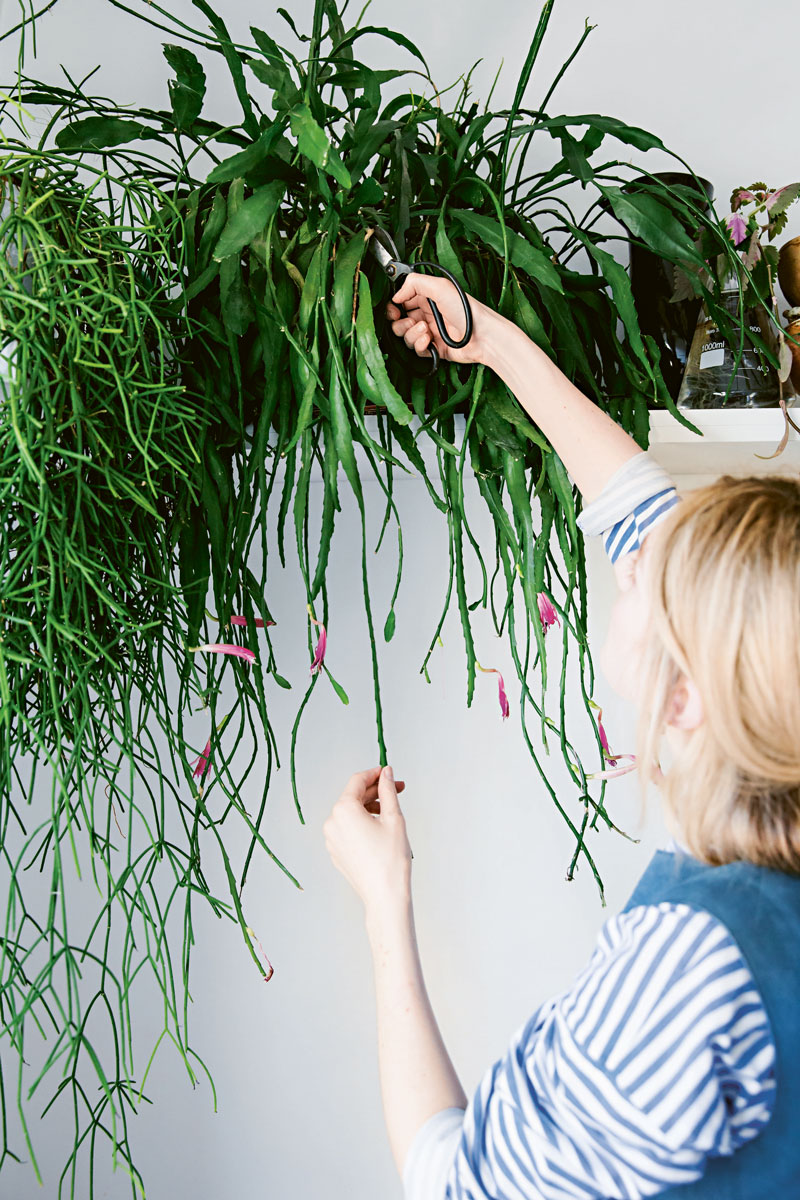
Extracted from Root, Nurture, Grow by Caro Langton and Rose Ray of Ro Co (Quadrille, £18) Photography © Erika Raxworthy
What are your favourite plants at the moment?
We have always loved the wiggly fishbone cactus – an attention grabber that needs hardly any maintenance. The monkey’s tail cactus, which has stems that genuinely looks like soft monkey tails, is another of our favourites; it’s quite a rare plant and any time we post a photo of ours on Instagram we get so many comments and messages asking about it!
In terms of plants that’ll become popular, the Selenicereus chrysocardium, monstera Adonsonii (Philodendron Monkey Mask) and the variegated monstera and other variegated species are beautiful.
Where would you recommend our readers find amazing house plants?
New Covent Garden Flower Market is fantastic value and Conservatory Archives, also in London, has a brilliant selection. Look out for bargains – they’re all over the place! You can find them in supermarkets and garden centres: they’re much cheaper than a lot of trendy plant shops.
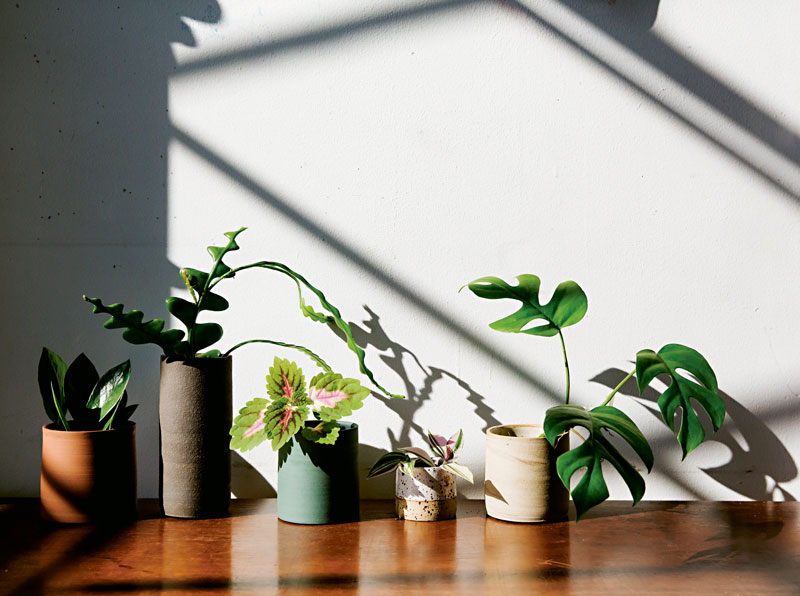
Extracted from Root, Nurture, Grow by Caro Langton and Rose Ray of Ro Co (Quadrille, £18) Photography © Erika Raxworthy
What are your top tips for keeping houseplants alive?
Most people think of light when it comes to plant care but, from my experience, the temperature is just as important. Before you buy a plant, spend time finding out what its needs are in terms of light and temperature; some plants, like delicate ferns, thrive with humidity and warmth and may thrive in your bathroom all summer but die after one harsh winter night.
Plants tend to go brown due to overwatering or underwatering. We say, stick your finger in the top of the soil and if it feels dry up to your knuckle, then you know you need to water it. If it feels at all wet, don’t water it.
Make sure the plant has good drainage as water at the bottom can become stagnant and you get root rot. This is especially important for cacti and succulents. You can modify sealed pots by putting a handful of stones at the bottom to act as a reservoir; this is normally enough to halt the problem.
Any tricks for bringing plants back to life?
As detailed in our second book, with any struggling plant, you can take cuttings from healthy parts and revive the plant in different ways. To take a cutting, cut just below a node (the part on the stem where side shoots and leaves grow, and where the rooting hormones are) and then encourage new roots by putting the cutting in water or pre-moistened compost.
Re-potting and providing nutrients will also help plants blossom, while plants like the Oxalis grow from bulbs that purposefully die off in the colder months then revitalise over summer.
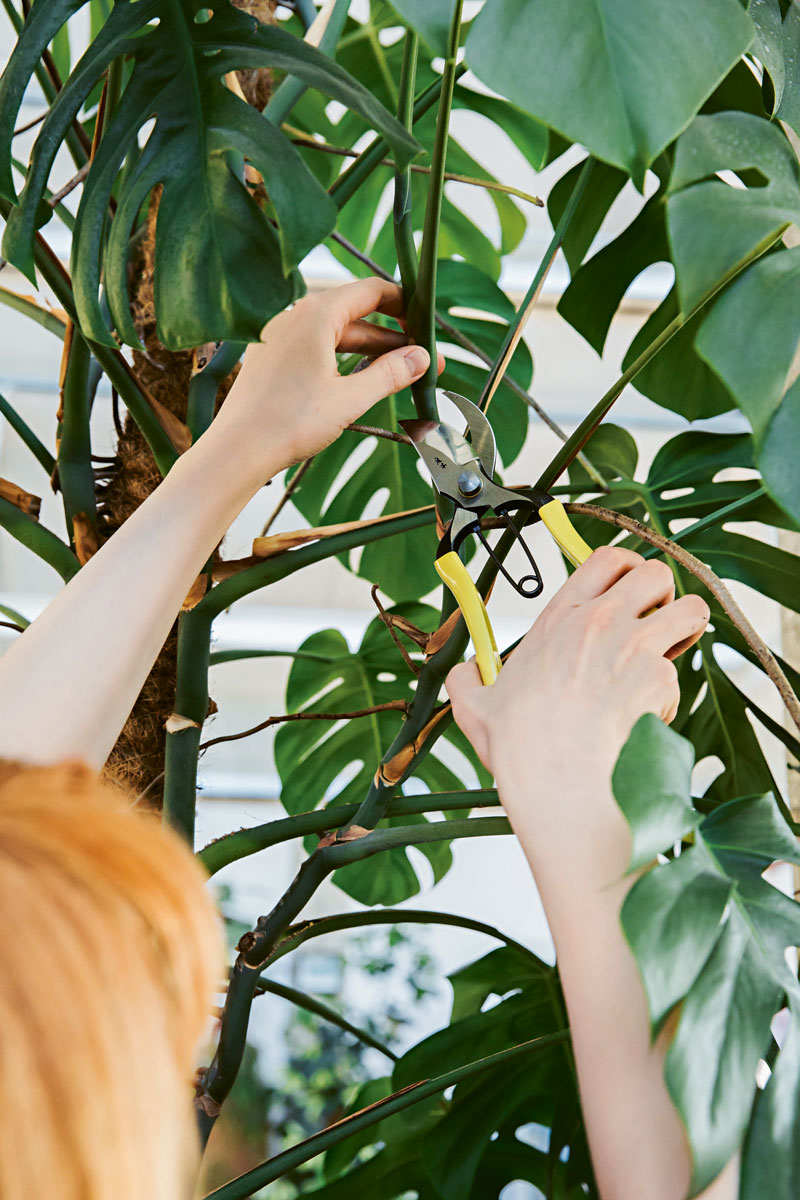
Extracted from Root, Nurture, Grow by Caro Langton and Rose Ray of Ro Co (Quadrille, £18) Photography © Erika Raxworthy
What are the best rooms for different plants?
Plants are generally adaptable, but you should place them away from radiators and draughty windows or doors. Cacti and succulents like hot, dry rooms, and can be placed on a sunny windowsill, but don’t put them in your bathroom as they like to dry out between watering and too much humidity can damage them.
Bright and indirect light is optimal for most tropical plants, and some that are used to low levels of natural light can survive in a shady room: species of Scindapsus and pothos, for example, thrive with low light, as does the aspidistra ‘cast iron plant’. The asparagus fern likes humidity and low light so is suitable for a shady bathroom or kitchen.
Do plants need specific seasonal care?
Seasonal care depends on if your home is warm and bright all year round. If you know your house is going to get colder and darker, you should force a period dormancy onto your plants by reducing watering as autumn sets in; this will allow your plants to reserve energy until the following spring.
In general, cacti and succulents are happy with lots of sunlight, but generally, houseplants and extremes won’t go down well; indoor plants like consistency. A sudden icy draft will be shocking and direct sunlight or a blasting radiator can scorch, so be aware of your own home: you can move your plants around and find a better spot for them in a different season.
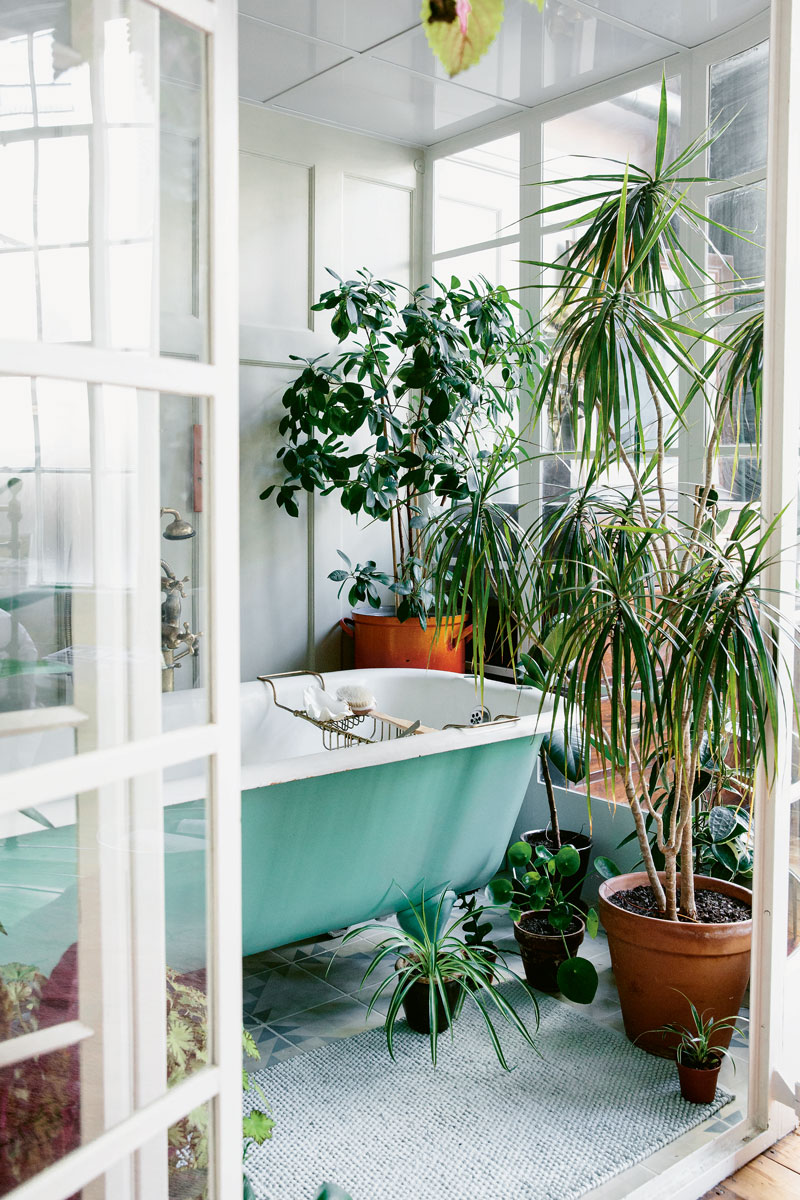
Extracted from Root, Nurture, Grow by Caro Langton and Rose Ray of Ro Co (Quadrille, £18) Photography © Erika Raxworthy
Are there any plants that go particularly well together?
The first thing is to find plants that have similar lighting and humidity needs. After that, we suggest choosing those with contrasting leaf shapes and patterns, or different overall silhouettes. This allows each one to hold its place. Plants arranged in threes always look nicely balanced and high shelves – great for space savers in cities – look lovely with trailing plants.
Any unusual facts about indoor plants?
You don’t need soil to grow some; look for ‘hydroponic’ plants, which are grown without soil, and only need added nutrients to survive. By eliminating the soil, you reduce the chance of bacteria damage, making hydroponic plants hardier.
The history of indoor gardening goes back thousands of years; remnants of potted plants were discovered in the ruins of Pompeii, and propagation techniques such as air layering date back to the bonsai growers of ancient China.
Where are your favourite green spaces?
Chelsea Physic Garden is a hidden gem – it’s an enchanted medicinal garden in south London and is actually the second oldest surviving botanical garden in England after Oxford’s, which is another of our favourites to visit.
We haven’t made it there yet, but we’ve got our sights set on the courtyard of the Isabella Stewart Gardner Museum in Boston which looks like it should be in Marrakesh! The combination of textures and symmetry is so alluring.
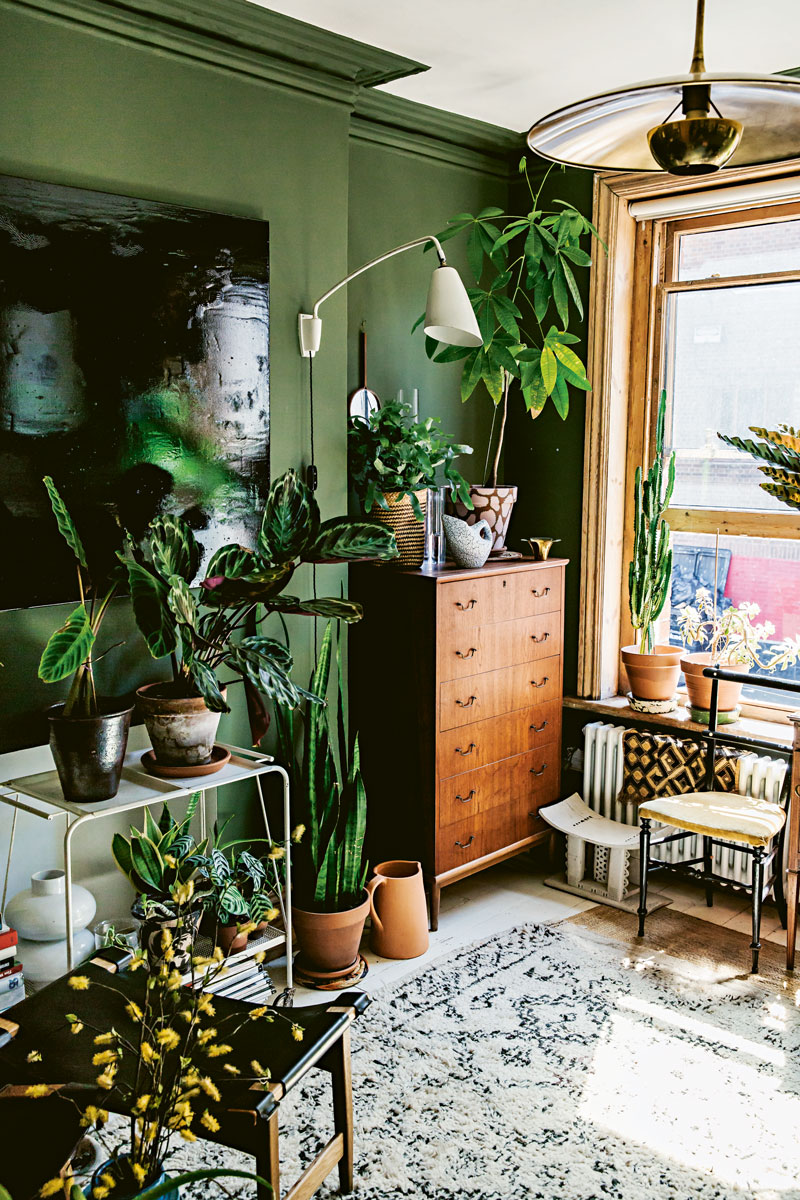
Extracted from Root, Nurture, Grow by Caro Langton and Rose Ray of Ro Co (Quadrille, £18) Photography © Erika Raxworthy
What can we learn from your books?
We started with a market stall so we were always talking to our customers face-to-face from the very beginning and this helped us figure out what people wanted to know. We combine practical advice with technical information alongside beautiful styling images and inspirational photography. There are lots of projects and step-by-steps and the first book is very accessible – suitable for both beginners and a gardener who’s more knowledgeable.
The second book is for someone who’s built up a bit of confidence with house plants and is asking ‘what do I do next?’. Here we teach you about things such as clever pruning as we want to encourage people to grow their own houseplants: they end up so much more robust and visually interesting thanks to their quirks. We predict plant swapping and sharing will be a trend; it’s not just about saving money, but connecting with each other and finding your tribe.
Need help on caring for your indoor plants? Take a look at our guide:
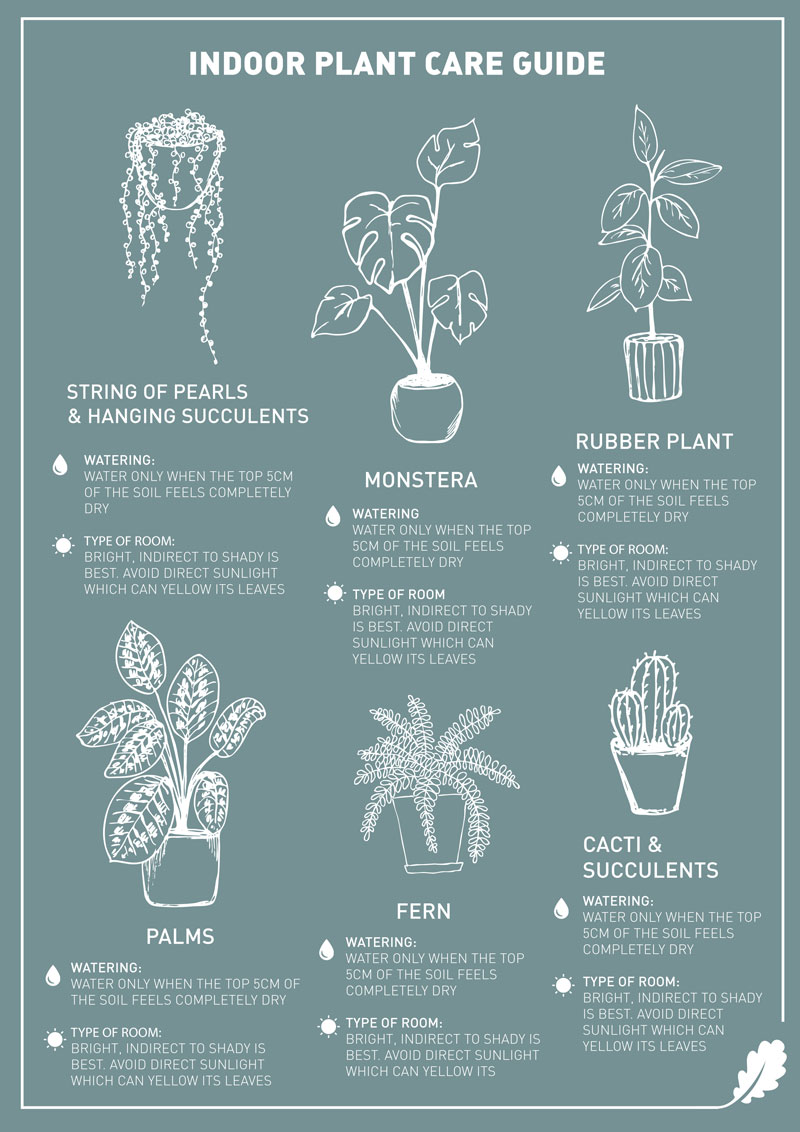
Cacti & Succulents
Watering: Roughly every 10-15 days in spring and summer, leaving to dry in between waterings
Type of room: A dry, bright room & can be placed on the windowsill. Avoid bathrooms.
Chrysocardium
Watering: Weekly in the summer and very occasionally during winter
Type of Room: Dry, bright, indirect light with a little direct sunlight is ideal
Monkey’s Tail Cactus
Watering: Water only when the soil dries out completely
Type of room: A bright, dry room with no direct sunlight
Monstera
Watering: Water only when the top 5cm of the soil feels completely dry
Type of room: Bright, indirect to shady is best. Avoid direct sunlight which can yellow its leaves
Palms
Watering: Beware root rot, which can be caused with overzealous watering of if there is poor drainage. Water only when the top 5cm of the soil is completely dry.
Type of room: Bright, indirect light to shade is best; for most species avoid direct sunlight
Rubber Trees
Watering: Water roughly once a week in the warmest months; you want the soil to be damp but never soggy. Reduce watering in colder, darker months and only give it a drink when the soil dries out completely.
Type of room: Rubber plants like lots of indirect, bright sunlight. Too much or too little will cause problems, so try to find a happy medium. The sap of some rubber trees can be harmful to pets so check carefully before buying.
String of Pearls & Hanging Succulents
Watering: Like all succulents, water generously only when the soil is bone dry. Allow good drainage.
Type of room: It loves sunshine, so a bright room or windowsill with lots of room to sprawl is best. Best kept away from children and pets as can cause stomach upsets if eaten.
Ferns
Watering: Keep ferns’ soil moist but not soggy at all times
Type of room: A bathroom or kitchen with north facing windows and mid to low sunlight is best. Consistent warmth is ideal.
Rubber Plant
Watering: Keep soil moist but never wet, with good drainage.
Type of room: Bright, filtered light is best; next to an east or west facing window with little harsh sunlight is ideal. Rubber plants love high humidity, so a kitchen or bathroom will suit it; otherwise a regular mist will help keep it happy and also keep its leaves clean
Mother-in-Law’s Tongue
Watering: This plant is a succulent so water only when the soil is bone dry, and ensure good drainage
Type of room: Any warm, dry room with bright to indirect light will do
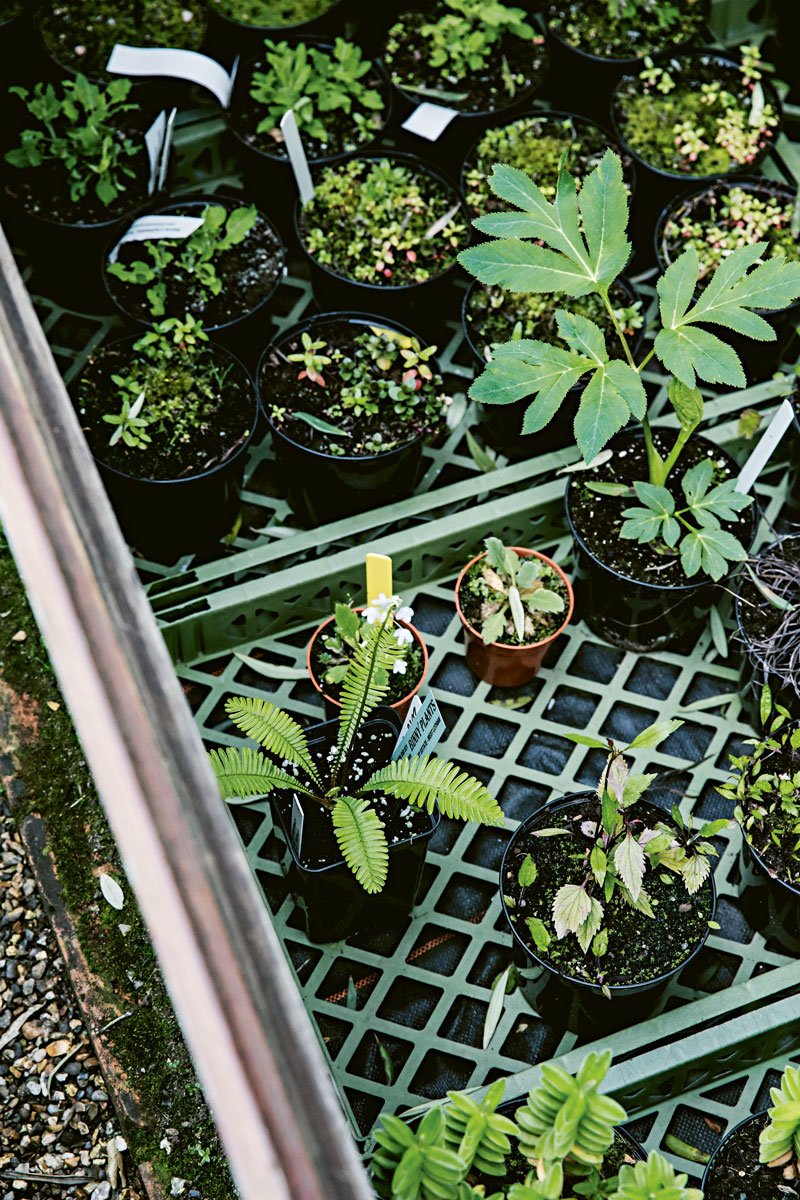
Extracted from Root, Nurture, Grow by Caro Langton and Rose Ray of Ro Co (Quadrille, £18) Photography © Erika Raxworthy
About Ro Co
Ro Co is an indoor botanical design studio helping companies around London enhance their interiors with luscious, impactful indoor greenery. From open-plan workspaces to subterranean restaurants, each miniature jungle is designed to inspire and improve the wellbeing of people living in the city.
Their debut book was the international hit, House of Plants, which has been translated into 8 languages and continues to help young urbanites choose, nurture and style their cacti and tropical plants.
Their second book, Root, Nurture, Grow is the first dedicated houseplant propagation handbook, teaching indoor gardeners how to multiply and share their favourites.
